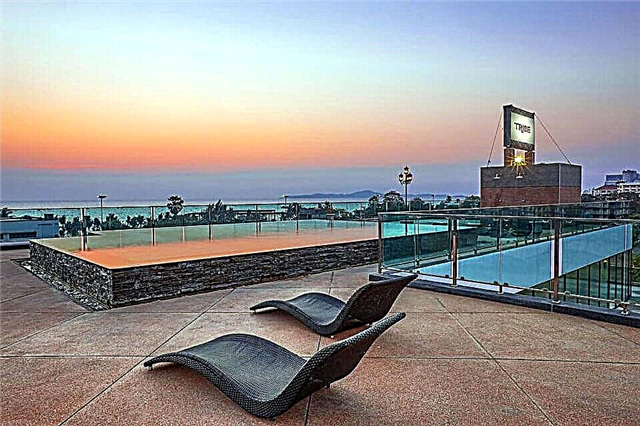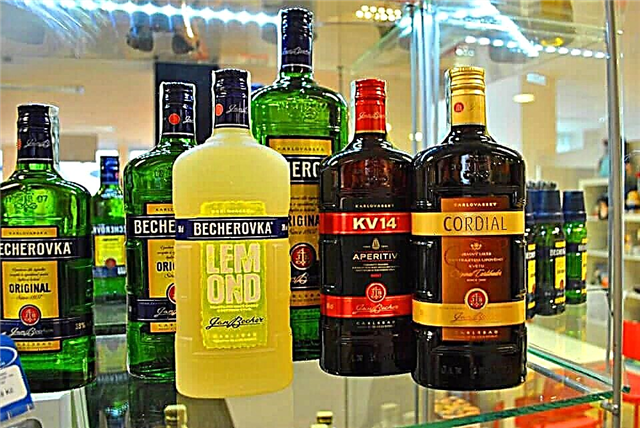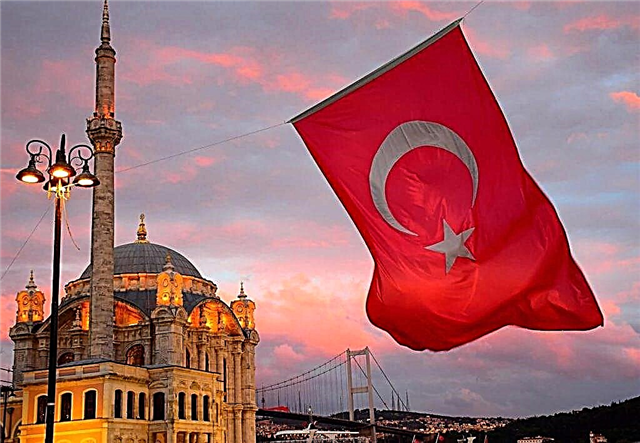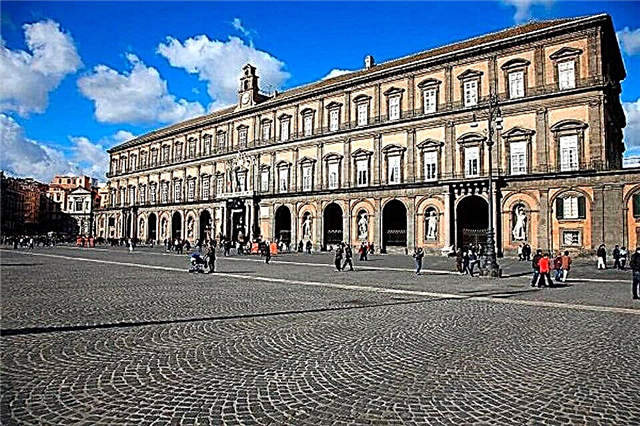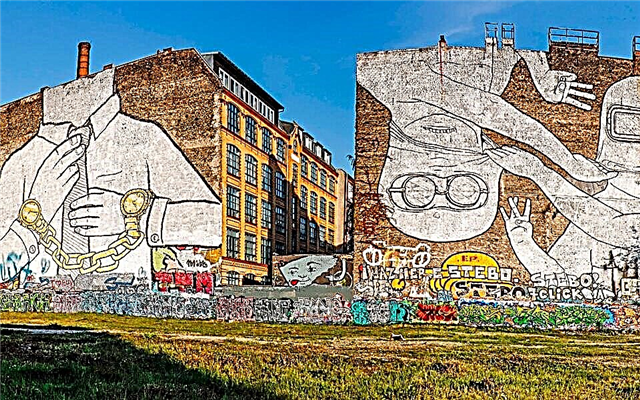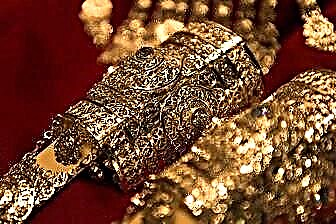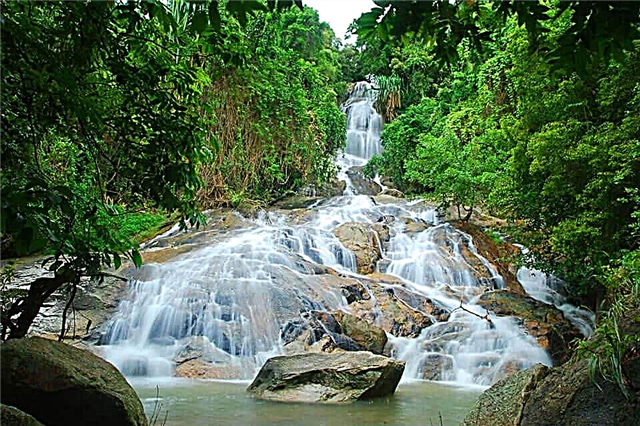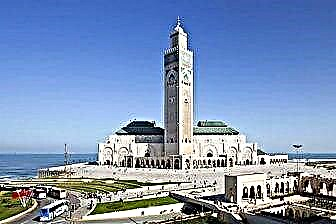Casablanca is one of the largest cities in Morocco. Its coastal location has made it an important port for the country. Trade relations with other states affected the formation of today's Casablanca. The districts combine a traditional Islamic look and modern influences from Europe. The city has long held the position of a business, tourist and cultural center.
The construction of the international airport has brought new flows of travelers to the city. For their leisure time there is everything you need: amenities are not worse than in the resorts of the Old World, and local flavor. Christian temples and synagogues are important landmarks. It is unlikely that it will be possible to meet so many of them in another Islamic city. And the Habus quarter and Old Medina will allow you to understand other features of Casablanca.

The best hotels and hotels at affordable prices.
from 500 rubles / day
What to see and where to go in Casablanca?
The most interesting and beautiful places for walking. Photos and a short description.
Hassan II Mosque
Construction ended in 1993. It is considered the second largest mosque in the world. Interior decoration - onyx, golden marble. The height of the only minaret is 201 meters. The maximum capacity of the prayer hall is about 25 thousand people. The roof is sliding: in just a few minutes, a spacious room turns into a courtyard. About 80 thousand more parishioners accommodate the square, which was equipped nearby.

Old Medina
This part of Casablanca is sandwiched between the port and the city's main mosque. The quarters have been forming for decades. Old Medina is like a classic Arabian neighborhood. The building is dense, the streets are always crowded. Trade is brisk, both in shops and in the open air. In the vicinity there are sights such as the Sidi Kairouani sanctuary, a picturesque park and the "gate of the navy".

Habus quarter
The most recognizable part of the city. The quarter was created in the XX century for migrants from the province. Since there is a palace nearby, the area quickly gained popularity among the wealthy. The architecture is mixed - modern features are combined with the classic urban buildings of the past. Shops and several markets are concentrated within the boundaries of Habus. They sell everything from olive oil to brass products.

United Nations square
Built at the walls of Medina several centuries ago. However, its modern appearance took shape only at the beginning of the last century. In the center of the square there is a dome that resembles half a globe. It is surrounded by flags of different countries. The design is illuminated in the evening and at night. The area is lively: nearby transport interchanges, as well as the business district and streets with an abundance of retail outlets.

Muhammad V Square
It is the center of social and business life. Restaurants, al-Maghreb bank, post office and police prefecture are built around. Close to the square are the Arab League Park and the public garden. The boulevards diverge in different directions - a great place for walking. In the evening, a colorful show "performed" by a light and music fountain takes place.

Corniche promenade
One of the elite areas of the city. The territory is built up with expensive pitchforks and hotels. There is always perfect cleanliness on the embankment. Almost all the beaches in the area are owned by hotels or individuals. There are also small public areas, but there is minimal service. Another distinctive feature of the Cornish is the abundance of greenery, gardens and flower beds. Life on the embankment is in full swing mainly in the evening and at night.

Mahkama du Pasha
The palace of the ruler of Casablanca was built from 1948 to 1952. It is known as a place of official receptions and the House of Justice. The exterior is modest in terms of decor and looks more like a fortress. The palace has 64 rooms, they are decorated in Moroccan and Moorish styles. The main elements of interior decoration: multi-colored mosaic, white marble, stucco, dark cedar. Mahkama du Pasha is not always open to tourists.

Royal Palace of Casablanca
Located in New Medina. The main residence of the king in Casablanca. In terms of architecture, the palace gravitates more towards traditional Moroccan and Muslim motives, but the influence of French culture is also visible. Surrounded by artificial reservoirs and orange groves. Tourists sometimes have access to the territory of the palace, but not inside. Visitors are especially attracted by the rich design of the main entrance.

Sacre Coeur Cathedral
Construction took place in the 30s of the last century, when the city was under French rule. The cathedral is made of cast concrete. The architectural style is ambiguous: neo-Gothic was mixed with Muslim architecture. Even the Sacre Coeur towers look like minarets. In the 50s, the building was given to an educational institution. Later, the cathedral was converted into a cultural center, and now exhibitions, festivals and fairs are held.

Cathedral of Notre Dame de Lourdes
The Catholic Cathedral was built by 1956. Plays an important role for Christians living in the Islamic region. The structure is monolithic, cast from concrete. For a Christian church, it has an atypical appearance. This did not prevent the cathedral from obtaining the status of a cathedral. Colored stained-glass windows of impressive size stand out in the design. They are made by renowned French painter and glassmaker Gabriel Laura.

Bet El Temple
The city's central synagogue, which is considered the oldest in the country. Serves as a religious and cultural center. She conducts training sessions for preschoolers. The prayer hall hosts social events. Non-religious tourists are primarily attracted by the decoration of the premises: carved rosettes, stucco, handmade furniture, stained glass windows, large silver candlesticks.

Abderrahman Sloughi Museum
In the past, this house belonged to a businessman, after whom it is named. The collection is still in private hands, but for tourists access is unlimited. The collection is based on a collection of Moroccan decorative arts. Other exhibits: posters from the 1890s-1950s, Berber jewelry, inlaid furniture, glass boxes, ceramics, perfume bottles.

Moroccan Jewish Museum
Such an exposition is unique for the Islamic region. She talks about Jewish culture, the contribution of this people to the development of the country. The exhibits include clothing, jewelry, religious objects, models of iconic buildings, photographs and ancient books. They are divided into topics and halls. The permanent exhibition is complemented by temporary exhibitions. Documentary films are shown at the museum's media center.

Villa des Arts de Casablanca
The art gallery is housed in a building with a picturesque garden. The architectural style is art deco. The collection gathered here was presented to the public in the 30s of the last century. In the halls, visitors are shown paintings, panels, sculptures. Both Moroccan and foreign artists are represented. This center is not only an expositional, but also a cultural one. Many city events are held here.

Casablanca tram
Casablanca's tram system is one of the most modern in the world. Commissioned in 2012. The length is 31 km, the number of stops is 48. The cars were purchased from the French. They are equipped with air conditioning, tinted windows, monitors, which display all the information important to passengers. The workload limit is about 250 thousand people per day. Now the passenger traffic is 2 times less.

Lighthouse El Khank
Appeared on the cape of the same name in 1914. The height is about 50 meters. The lighthouse is distinguished from similar buildings in other cities only by the cornice in the Moroccan style. The lighthouse keeper lets tourists inside for a small fee.To go upstairs, you need to climb a spiral staircase made of marble. The equipment of the lighthouse is about 100 years old, but it is completely serviceable. The light is visible from here for 53 km.

Twin Center
The Twin Towers are located in the commercial area of the city. The tallest of its kind in Casablanca. The center has been operating since 1998. The project belongs to the architect from Spain Riccardo Bofilla. Inside, in addition to offices, there are 130 shops, a luxury hotel, a high-level restaurant, a bar and a supermarket. The boutiques sell both brands from Europe and national dresses, as well as products of local famous companies.

Morocco Mall
The best place to shop in Casablanca. A modern shopping and entertainment center is located near the coast. Shops of dozens of world brands are gathered under one roof. Entertainment is represented by the Adventureland children's play area, the IMAX cinema complex, a large aquarium, a musical fountain, an ice rink and a garden with a pond. You can also have a snack here: the local food court is the largest in the city.

Ain Diab Beach
The premier beach destination in Casablanca. The territory is divided into public, closed and private beaches. Service at a high level: there are any amenities and rental of everything you need. Cafes and bars are close to the beach. Leisure: sports grounds, petanque games, the opportunity to ride camels and horses, water attractions. Coastal waters are often turbulent, but lulls do occur.

Aquapark "Tamaris"
The largest water park in Morocco. Tamaris is located 15 km from Casablanca. The area of the territory is 7.5 hectares. The children's entertainment area is called Twistie Paradis. There is a gift shop, cafe, bar with soft drinks, mini-zoo. The ticket includes the right to stay in the water park all day and the opportunity to use any of its attractions, pools and the beach.


